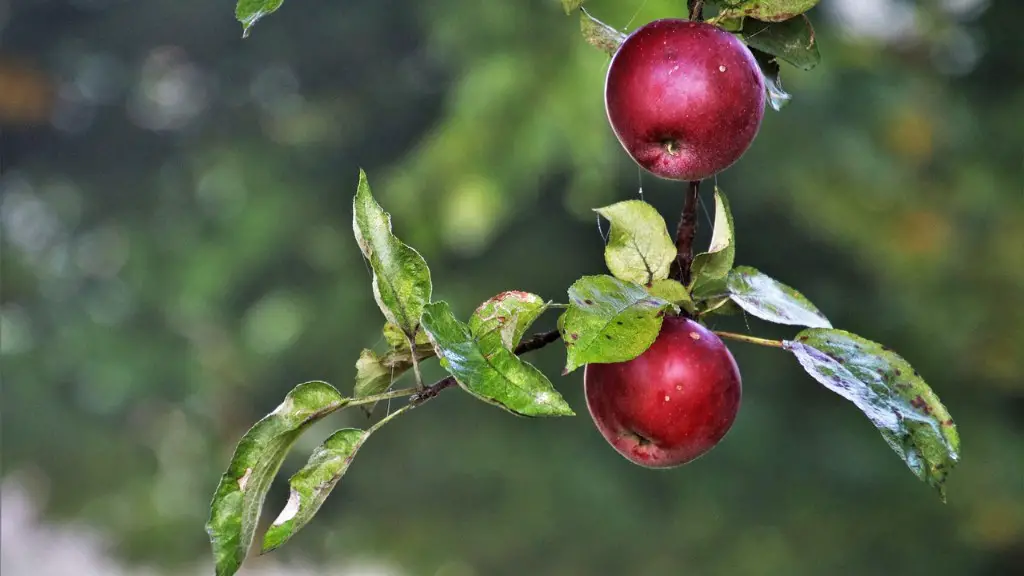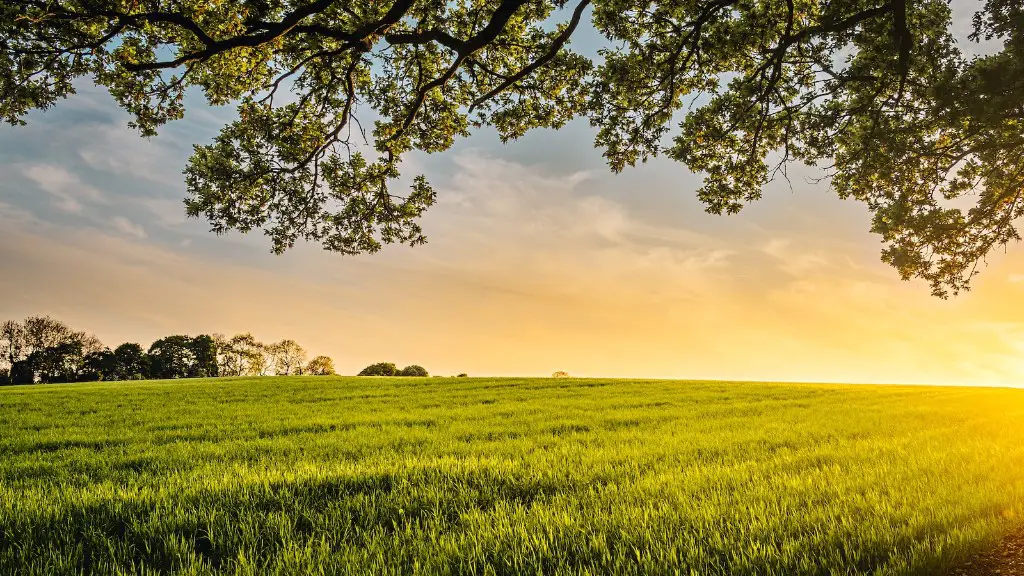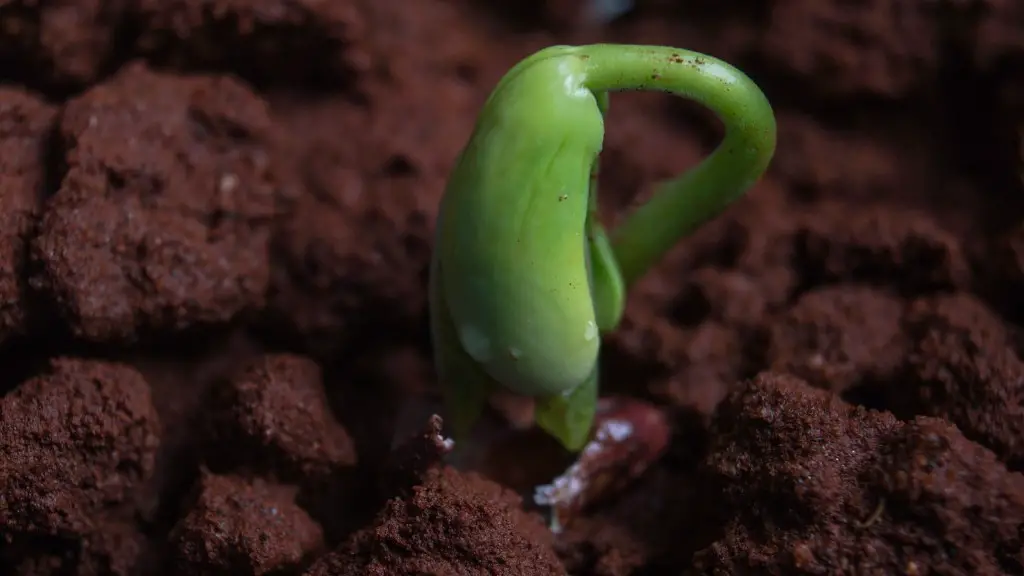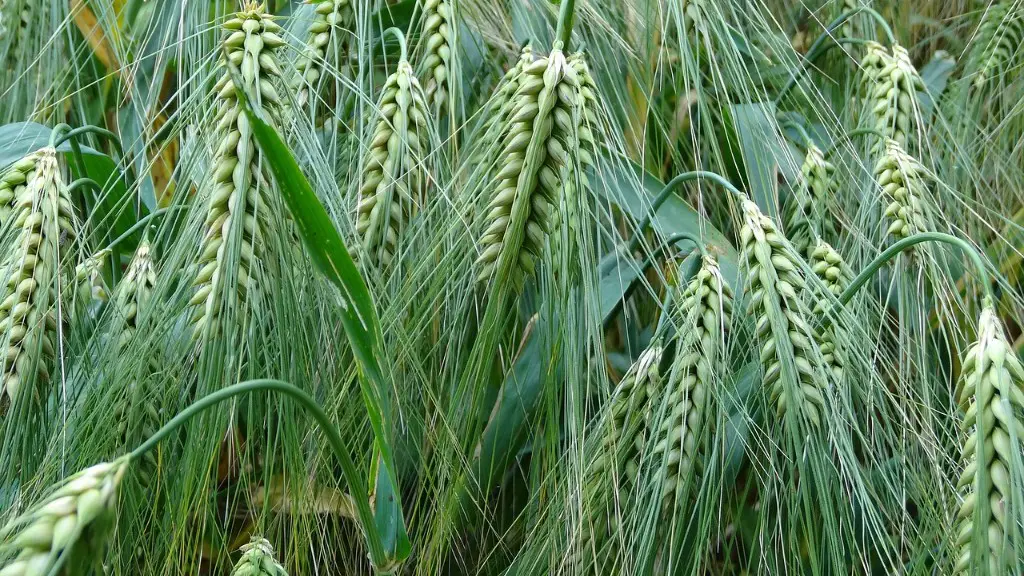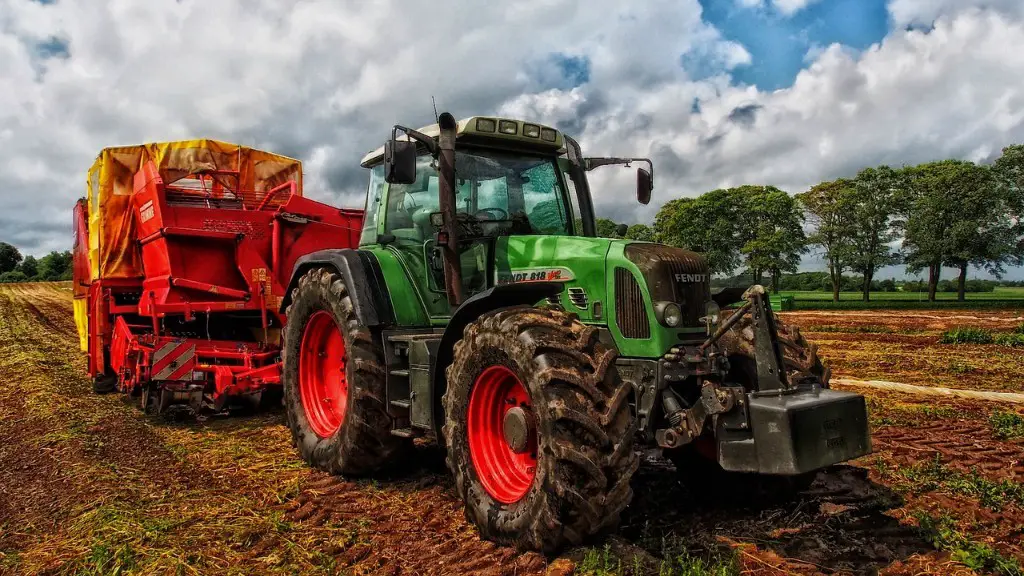In the 21st century, the population is ever-increasing while the amount of arable land is diminishing. In order to meet the demand for food, it is necessary to increase productivity through modernization. This can be done through the use of technology and science to increase yields, decrease pests and diseases, and improve irrigation. Modernization is also necessary to make the agricultural sector more efficient and sustainable in the face of climate change.
There are a number of reasons why modernization is necessary in agriculture. First, the world population is growing and there is an increasing demand for food. This means that farmers need to produce more food with fewer resources. Second, climate change is making it more difficult to grow crops and raising animals. This means that farmers need to use more efficient methods to produce food. Third, the international market for food is becoming more competitive. This means that farmers need to be able to produce food at a lower cost in order to compete. Finally, advances in technology are making it possible to produce food more efficiently. This means that farmers need to adopt new technologies in order to remain competitive.
Why do we need modern agriculture?
Modern agriculture is an ever-changing approach to agricultural innovations and farming practices. Farmers are constantly finding new ways to increase efficiency and reduce the amount of natural resources needed to meet the world’s food, fuel and fiber demands. With the help of modern technology, farmers are able to produce more food with less water, land and energy. They are also able to reduce the amount of pollution and waste generated by traditional farming methods.
The process of agriculture modernization includes mechanization and chemicalization. Mechanization comes with higher capital intensity whereas chemicalization implies that farmers adopt practices that increase the efficiency in the use of fertilizer and chemicals required to produce a certain level of outputs.
What are the primary objectives of modernizing agriculture
The primary objectives of modernizing agriculture system are as follows: Provision of loan Use of agriculture tools and technology Training and focus on agriculture education. All of these objectives are important in order to make the agricultural sector more productive and efficient. Loan provision ensures that farmers have the necessary resources to invest in modern tools and technology, which in turn increases their productivity. Training and focus on agriculture education helps farmers to better understand and utilize new techniques.
Modernization of agriculture has led to increased production of food grains. However, it has also resulted in increased use of chemical fertilizers and pesticides, which has led to environmental concerns.
What is the impact of agricultural modernization to the society?
Agriculture modernization has increased food supply and also played a role in raising the income of farmers. It has also helped in the development of the local economy.
The regression model of rate of return shows that the level of agricultural mechanization has a significant positive effect on the income rate of each type of agriculture. Each unit increase in the level of mechanization increases the total agricultural rate of return, rate of return of grain crops, and rate of return. This is an important finding as it suggests that increasing the level of agricultural mechanization can lead to higher incomes for farmers and agricultural businesses.
What is the importance of modernization?
According to modernization theory, traditional societies will develop as they adopt more modern practices. Proponents of modernization theory claim that modern states are wealthier and more powerful and that their citizens are freer to enjoy a higher standard of living. They believe that traditional societies have a lot to gain by modernization, including increased prosperity and increased freedom.
Modernizing irrigation infrastructure can have a number of benefits for both farmers and the environment. By decreasing the amount of water and energy needed to grow crops, farmers can save money and increase their profits. Additionally, modernizing irrigation infrastructure can help reduce environmental pollution from agricultural runoff. Finally, by allowing more water to flow through streams and rivers, modernizing irrigation infrastructure can help improve the habitats of fish and other aquatic creatures.
What is modernization and its importance
Modernization theory is based on the idea that there is a linear process of development that all societies go through in order to become modern. This theory emerged in the 1950s and 1960s as a way to explain the process of economic and social development in poorer countries. Modernization theory posits that the key to development is to Westernize these societies through Adoption of technology, institutions, and values. This theory has been critiqued for its Eurocentric and Western-biased perspective. Nevertheless, it continues to be influential in policymaking and developmental discourses.
Agriculture’s contribution to climate change is one of the most significant and controversial topics in the field. The sector is responsible for Greenhouse gas emissions from production processes (fertilizer use, livestock, deforestation) land-use change (deforestation, soil emissions) and agricultural soils (methane and nitrous oxide emissions). In addition, agriculture contributes to deforestation, which is a major source of greenhouse gas emissions.
Livestock production is one of the most significant sources of greenhouse gas emissions from agriculture. The sector is responsible for 14.5% of global anthropogenic greenhouse gas emissions, the majority of which comes from enteric fermentation by cattle and other ruminants. Deforestation is another significant source of emissions from agriculture. It is estimated that agriculture is responsible for approximately 80% of deforestation globally. This results in the loss of carbon dioxide sinks and has a direct impact on greenhouse gas emissions.
Soil degradation is another major environmental issue caused by agriculture. Poor agricultural practices can lead to soil erosion, compaction, and nutrient depletion. These problems can result in reduced crop yields, decreased carbon storage, and increased greenhouse gas emissions. In addition, irrigation can lead to waterlogging and salinization, which can also degrade
What is a positive impact of modernization?
Modernization can have both positive and negative effects. On the positive side, modernization often results in increased economic growth, decreased poverty rates, and improved health care. However, it can also lead to increased pollution, loss of traditional values, and the displacement of people from their homes.
As our society modernizes, the individual becomes more and more important, slowly replacing the family, community, or occupational group as the basic unit of society. The division of labour, which is characteristic of industrialization, is also applied to institutions, which become more highly specialized. This increasing importance of the individual can be seen in the way that we are increasingly defining ourselves as individuals, rather than as members of groups. We are more likely to identify ourselves by our occupation, interests, or beliefs than by our family name or community. This change has had both positive and negative consequences. On the one hand, it has led to a more tolerant and open society, in which people are free to pursue their own interests and express their own opinions. On the other hand, it has also led to a more atomized and isolated society, in which people are less likely to cooperate with or help others.
What was the purpose of the four modernization
The “Four Modernizations” were first proposed by Deng Xiaoping in 1979 as goals for China to achieve in the areas of agriculture, industry, defense, and science & technology. While China has made great progress in all of these fields since then, there is still much room for improvement. For example, in agriculture, China still lags behind many developed countries in terms of productivity and efficiency. In industry, China faces challenges such as environmental pollution and a lack of high-end manufacturing. And in science & technology, China still relies heavily on foreign technology.
Agricultural intensification can lead to increased production levels, but it also requires far more raw materials and can generate environmental problems, such as natural resource depletion and pollution of land and water.
What are the important features of modernization?
Industrialization, urbanization, social mobilization, differentiation, secularization, media expansion, increasing literacy and education and expansion of political participation are all components of modernization. Each of these factors has contributed to the process of modernizing societies around the world.
The federal government is making a shift in its focus when it comes to cybersecurity. Modernization is the name of the game, and emerging technologies like data analytics and digital services are at the forefront. This is a positive move, as the government looks to better protect citizens and businesses from online threats.
What are the positive and negative effects of modernization
Modernization has had a positive effect on many aspects of life. One of the most noticeable changes is the improvement in medical care and facilities. With the advancement of technology, many diseases and afflictions can be treated more effectively. This has resulted in a longer life expectancy and a better quality of life for many people.
Another area where modernization has made a positive impact is in the area of communication and transportation. With the development of the internet and mobile devices, people are now able to connect with each other more easily and quickly. This has made communication more efficient and has led to the development of new transportation options, such as ride-sharing apps.
The use of automation and precision farming are both ways to make farming more efficient. Automation, which can include the use of robots, drones, and autonomous tractors, can help reduce the amount of time and labor needed to farm. Precision farming, which involves applying irrigation, fertilizers, and pesticides at variable rates, can help reduce the amount of chemicals and water used, and can improve crop yields.
Warp Up
The industrialization of agriculture is a necessary step in the modernization of society as a whole. Agriculture is the foundation of human civilization, and the industrialization of agriculture has allowed for unprecedented levels of food production and distribution. It has also allowed for the development of new methods of food production, such as aquaculture and hydroponics, that can be used to increase food security in regions where traditional agriculture is not possible.
Modernization is necessary in agriculture in order to produce more food to meet the needs of a growing population. With more efficient methods of production, farmers can produce more food with less land and labor. This is important not only for the food security of a nation, but also for the economy and the environment.
